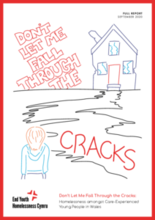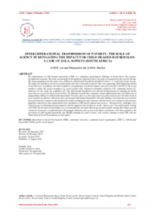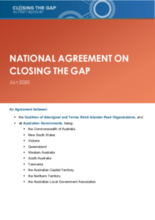Displaying 101 - 110 of 505
The objective of this paper is to report on the development and implementation strategy of a tool to be used for practice intervention during the pandemic.
This report is based on the voices and experiences of care experienced young people who have been, or are currently, homeless across Wales. The aim of this research is to amplify these young people’s voices to highlight the challenges they have faced when homeless and the need for reform of systems which have failed to prevent their homelessness.
This report is one in a series presenting findings from the Global COVID-19 Research Study. The results presented in this report focus on implications for child poverty.
This study aimed to explore questions relating to caseworker’s training on ethnocultural diversity in connection with racial disparities and overrepresentation of Black children in child welfare services.
This study explored child headed households (CHH) in South Africa.
This study sought to determine number and proportion of children of color with substance removals and whether disparities exist in likelihood of reunification compared to white children.
This article outlines the views of Indigenous practitioners collected as part of a doctoral study exploring the experiences of Aboriginal and Torres Strait Islander practitioners who undertake child protection work in Australia.
This study explored the prevalence of racial/ethnic disproportionality and disparity in parental drug use (PDU) foster care entries and described children characteristics across racial/ethnic populations.
This literature review examined the extent to which the US child welfare system acts as an informal income maintenance programme.
The objective of this Agreement is to overcome the entrenched inequality faced by too many Aboriginal and Torres Strait Islander people so that their life outcomes are equal to all Australians. Target 12 of this Agreement is to "by 2031, reduce the rate of over-representation of Aboriginal and Torres Strait Islander children in out-of-home care by 45 per cent."




